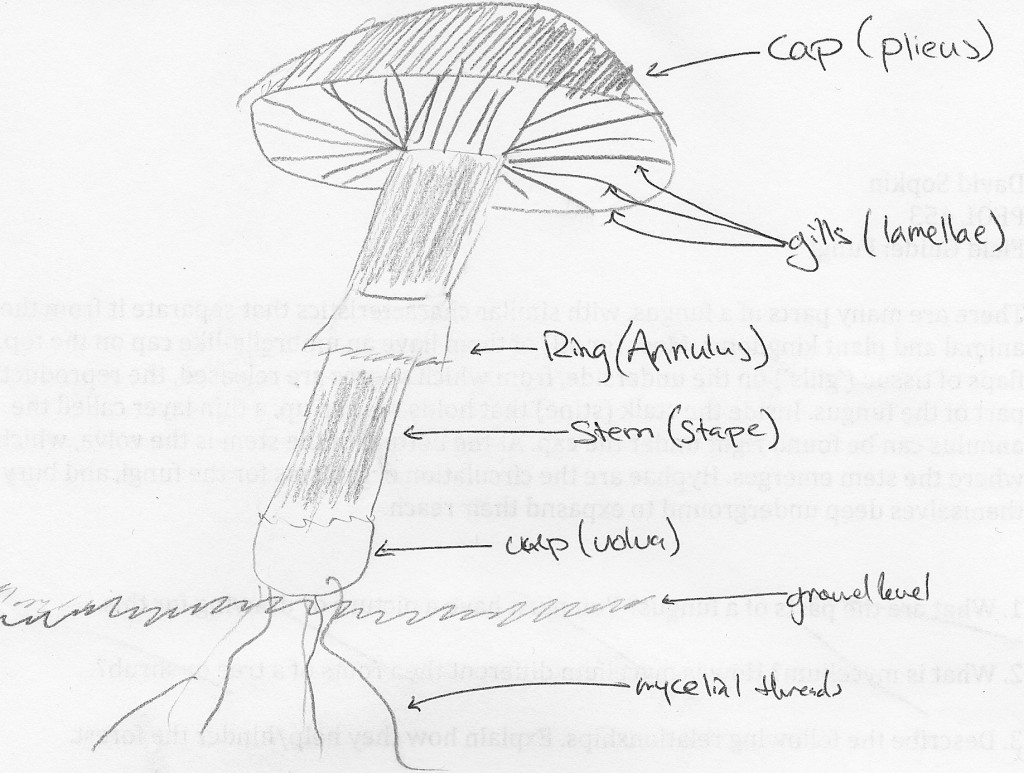Fungi
There are many parts of a fungus, with similar characteristics that separate it from the animal and plant kingdoms. Most (or all) of them have an umbrella-like cap (pileus) on the top, with flaps of tissue (‘gills’) on the underside, from which spores are released, the reproductive part of the fungus. Inside the stalk (stipe) that holds the cap up, a thin layer called the annulus can be found right under the cap. At the bottom of the stem is the volva, which is where the stem emerges.
Hyphae are the circulation organisms for the fungi, and bury themselves deep underground to expand their reach. These hyphae bundle together to create mycelium, the nutrient transportation vessels of fungi. They are different than tree or shrub roots because of how they grow (cell walls expand in hyphae, while roots grow new cells), and fungal cell walls are made of chitin, whereas most plants and shrubs have cellulose that make up cell walls.
There are many relationships in a forest that help contribute to its overall health.
Mycorrhizae is a two-way exchange system for plant roots and fungal hyphae to co-exist together. The mycorrhizae find a rootlet or root system connected to a plant, and each exchange beneficial hormones that help the fungus suppress plant-root hairs, while creating its own network of roots that are more powerful than regular plant roots. This beneficial relationship is the key to a majority of activity that happens between the roots and growing medium.
Saprophytic fungi is responsible for decomposing dead, organic matter. They are most noticeable as ‘shelf’ growths (conks) that grow on the outside of trees, and some resemble a brain or coral; wavy lines of growth. There are many varieties, but the most popular is the genus Laetiporus, or ‘chicken of the woods.’ Each variety brings a different method of decomposition, and most live in the rot of trees, and are considered saprophytes instead of parasites, because of the dead medium they are growing upon.
Lichenized fungi represents either an association of a fungus and an algae, or a cyanobacteria. Unlike the mycorrhizae, the algae can grow on its own, but the fungus cannot survive without the algae; in fact the algae must be present to even consider a fungus as a lichen. This beneficial relationship relies on the fungus getting its food from the algae, while the algae receives its minerals and water mostly through the fungus.
Parasitic fungi, in the last category of fungi, represents ones that feed on animal and plant tissue that’s still living, and doesn’t necessarily require dead organic matter to feed off of. Many interesting examples of parasitic fungi can be found in many places, including Cryptosporidium parvum, a very invasive parasite that can cause intestinal and other medical symptoms.

